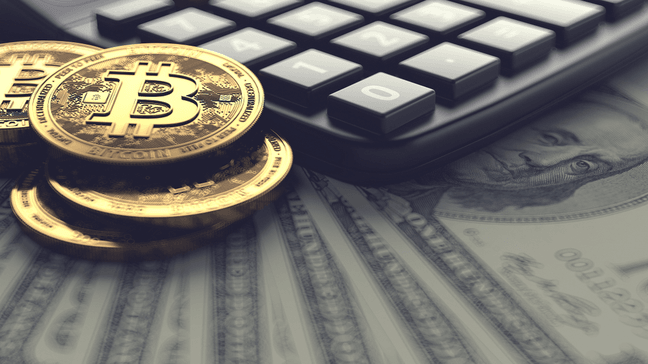Some people invest in cryptocurrencies for the long haul, hoping one of them will hit $1 million in their lifetime.
A worthy goal, and one that would pay off big.
But, on the much more realistic side, others buy crypto for immediate trading and use it more like a currency.
Regardless of your reason for purchasing crypto, at some point, you have to learn how to transfer crypto funds. Otherwise, you won’t be able to cash out your investment!
Here’s everything to know about safely transacting with crypto funds.
Steps for sending crypto from your wallet

You must complete a crypto sale by transferring the purchased amount of crypto to the buyer’s wallet. The exact steps for sending crypto from your wallet to another wallet depend on your wallet type and the exchange.
Still, you can expect the process to follow this general path:
- Open your mobile exchange, or desktop wallet and click “Send.”
- If you have multiple cryptocurrencies in your wallet, pick the one you want to send.
- The crypto purchaser or receiver will have a public key or address that may be a series of random letters and numbers or a QR Code. Paste the address into the recipient field in your wallet, or scan the QR code.
- Enter the amount you want to send in fiat currency (dollars) or the crypto amount. Be very careful to avoid entering cryptocurrency in place of fiat currency (300 bitcoins instead of $300). If the scanned QR code already contains the requested amount, this step is unnecessary.
- Triple-check the recipient’s address and other details before hitting send. Every detail must be correct because crypto transactions are irreversible.
- Hit “Send” once you are sure the details are correct. Your transaction processing will begin.
Before sending crypto for the first time, run a test by sending a small amount. Do this to verify that you have the correct information and avoid the heartbreak of performing the wrong transaction with a large amount of crypto.
Why and how to transfer crypto to your bank account
More businesses are accepting cryptocurrencies as a form of payment. However, crypto is not yet a widely accepted form of payment for goods and services. By converting your crypto into cash and putting it in the bank, you can spend it on whatever you want.
Also, because cryptos like Bitcoin experience continuous rise and fall in value, cashing out when the digital asset is at peak value may be in your best interest.
If you are wondering how to transfer crypto funds to your bank account, here are your options.
Sell your crypto on an exchange platform
You can sell your crypto on exchange platforms like Robinhood, Coinbase, or Binance.US. Using platforms like these for such transactions is super easy for newbies and crypto enthusiasts. These platforms also speed up crypto-selling by buying your digital assets and paying you within minutes.
It eliminates the inconvenience or security risks that come with having to find a trading partner. On the downside, you may be unable to sell your crypto at the highest possible price.
While selling your crypto on an exchange platform may be fast, withdrawing your money to your account is not. Depending on the platform, the process may take three to four days or even longer if you are outside the U.S. The fees you’ll pay for the transaction will also depend on your location and bank.
The exact steps for withdrawing crypto funds to your bank account typically vary between platforms, but the process generally involves:
- Signing up on the platform and completing a verification process.
- Linking a bank account, depositing money in your wallet, and buying cryptocurrencies.
- Selling the cryptocurrency and cashing out to your bank via direct bank transfer. Some platforms also allow cashing out via PayPal.
Withdraw at a Bitcoin ATM
ATMs are a convenient option for depositing and withdrawing money without going to the bank and enduring long queues. Bitcoin ATMs offer the same benefits to users who want to sell or buy Bitcoin with cash.
Bitcoin ATM designs vary between brands, but most systems have a QR scanner, dispenser, and bill acceptor. The QR scanner is a safe way to enter account details and buy or sell your crypto quickly. The dispenser gives you cash after selling your Bitcoin, while the acceptor takes cash for buying more Bitcoin.
If you prefer a cashless transaction, modern Bitcoin ATMs allow you to buy crypto with your debit or credit card. You can also sell crypto and transfer your earnings to your bank account or debit card.
To use your neighborhood Bitcoin ATM to withdraw to your bank, follow these steps:
- Verify your identity by entering your phone number into the device and using the verification code sent to your phone.
- After logging in with the verification code, select “Sell Bitcoin.”
- Enter the amount of crypto you want to sell, and transfer it from your digital wallet to the QR code that the ATM provides you.
- The exchange platform managing your wallet will process the transaction.
- After verifying your transaction, the ATM will pay you in cash, or you can transfer your earnings to your bank account if the option is available.
Note that most Bitcoin ATMs have a deposit and withdrawal limit, making them suitable for small transactions only. Bitcoin ATMs typically also charge high transaction fees – up to 12%, in some cases.
Other options
Other options for withdrawing your crypto to your bank account include the following:
- Bitcoin debit cards. Platforms like Coinbase and Binance.US allow you to sell your crypto and receive your earnings in a prepaid debit card sent to your address. You can use this Bitcoin debit card like a regular debit card for shopping or withdrawing at ATMs. You can also withdraw or transfer the money from the Bitcoin debit card to your bank account.
- Peer-to-Peer (P2P) transactions. Another option is selling your crypto to a trade partner that you find on a peer-to-peer platform or by other means. Specify to the P2P buyer that you want cash for your crypto, and they can pay it by cash deposit or bank transfer to your bank account. After receiving proof of ID and proof of payment, you can transfer the agreed amount of crypto to the buyer’s wallet address.
Fees to expect when buying or selling crypto
Trading fees
The typical exchange platform charges a small fee, between 0.1% and 0.2%, whenever you sell or buy crypto. The amount is insignificant if you rarely trade. Still, if you are a pro trader who’s constantly transacting, trading fees can quickly add up.
Premiums
Some exchanges charge a premium on every crypto they sell. Most companies that charge a premium don’t charge trading fees, while some greedy ones charge both a premium and trading fees. An example of a premium is selling one bitcoin at $2,000 when the actual market price is $1,800.
On the upside, exchanges that charge premiums have a stockpile of crypto and can sell you what you need quickly. An alternative is bearing the inconvenience of finding a trade partner who will sell their crypto at the actual market price.
Funding and withdrawal fees
Other platforms charge a funding or withdrawal fee, which means that you pay to fund or withdraw from your wallet to your bank account. The platform may also charge a withdrawal fee to transfer funds from your wallet to another wallet or exchange.
Transaction fees (mining fees)
Transaction fees go to the miner who adds your transaction to the blockchain. You pay the fee after sending your purchased crypto to your wallet. Transaction fees are typically about one or two cents, and the cost stays the same, regardless of how much crypto you buy.
Bank fees
Your bank may also charge you a fee when you withdraw crypto to your bank account. Besides fees, if you withdraw to a non-U.S. dollar account, your bank may use a lower exchange rate to convert the sum to your local currency. Instead of losing money to an unfavorable exchange rate, make sure the account linked to your crypto wallet is a U.S. dollar account.
How to minimize fees when buying or selling crypto
The key to minimizing crypto trading fees is using the right trading option. Exchange platforms like Robinhood charge zero commission fees on all crypto transactions. When looking for the best exchange for cheaply trading your crypto, consider not just their stated fees but also their fee structure.
For instance, some exchanges only charge to send crypto to or from an outside account. Others charge a fee regardless of whether you are sending to an outside or inside account. You also have exchanges that charge a premium on each crypto purchase. By identifying every possible fee an exchange platform may charge, you can find the cheapest platform to use.
Alternatively, avoid fees by buying or selling your crypto without using an exchange and transacting directly with a trading partner.
How much better is selling my crypto in person?
Trading cryptocurrency without using an exchange platform isn’t as complicated as you suspect. If you want to sell your crypto yourself, all you need is your crypto stored in a virtual hot or cold wallet. You can sell your crypto either bit by bit or everything at once to an interested buyer.
Paying taxes on your crypto trades

In 2014, the IRS declared virtual currencies as taxable property. That means when you buy, sell, or trade cryptos in any way, the United States government expects a cut. Depending on how long you’ve had your crypto, you may have to pay capital gains tax or income tax.
If you’ve owned your crypto for more than a year, you’ll have to pay long-term capital gains tax when you sell your crypto at a profit. If you sell your crypto at a loss—that is, at a lower price than you bought it—you won’t have to pay capital gains tax. Capital gains tax rate can be as low as 0% or as high as 20%, depending on your profit within the taxable year.
If you sold your crypto after owning it for less than a year, you’d be paying income tax instead of capital gains tax. Note that you only have to pay tax on your crypto when you trade with it. That means your crypto can accrue value within your wallet for decades, and you won’t have to pay tax unless you trade with part or all of it. Trading includes using your crypto to purchase goods or services.
Crypto owners who trade without paying taxes will get a notice from the IRS. If they ignore the notice, an interest rate of 0.5% will start accruing on the owed tax amount. The IRS will also issue a penalty of 5% every month. Besides the penalties, neglecting to pay your taxes can lead to the U.S. government confiscating your property or even lead to jail time.
What if I’m sending crypto between wallets?
Transferring crypto between wallets you own isn’t taxable because you earned nothing from the transaction.
Crypto buying tips
When trading cryptocurrencies on an exchange or in person, use the tips below to protect your interests.
Research the vendor
Before signing up to purchase cryptocurrencies from an exchange platform or trade partner, verify their reputation. Loads of negative feedback from other buyers is a big red flag that you must never ignore.
If you are buying from a trade partner, make sure the person has an ID-verified account. Otherwise, you might have trouble submitting a complaint if you run into problems.
Maximum trade amount
Suppose you intend to buy large amounts of cryptocurrencies. In that case, an exchange platform’s maximum trade amount may stop you from buying the quantity you want.
Most platforms lift or increase trade limits as you perform more trades. You can also resolve the issue by trading on a platform with more amenable trade limits or buy crypto in person from a trader.
Use escrow
Escrow is a valuable feature for ensuring that trading partners receive payment and that you get your purchased crypto. Escrow holds your money until you receive the agreed-upon amount of crypto in your wallet address.
Once you acknowledge receiving the correct amount of crypto, the system will release the money in escrow to the seller. Some platforms, like Paxful, insist on escrow and ban accounts that try to bypass it.
Be polite
When conversing with trade partners, be polite at all times. Using abusive or threatening language can lead to a banned account and losing your wallet’s contents if the offended party reports you.
Adhere to the transaction terms
When you and a trade partner agree to a price and crypto amount for a trade, avoid last-minute changes to the agreement. If a change in terms is necessary, you must reopen and negotiate the trade from scratch.
Avoid third-party payment options
If you and a trade partner set up a deal on an exchange platform, complete the deal on the platform. Some people suggest paying outside the platform to avoid fees and delays, but such suggestions often lead to getting scammed.
Mark a finished trade as paid
Immediately after paying for cryptocurrencies on an exchange platform, hit the “Paid” button. Doing so will show the platform that you have fulfilled your end of the bargain. Failure to indicate payment may lead to the seller canceling the transaction or the trade expiring even though you have paid.
Crypto selling tips
If you are buying crypto, you are someday going to sell it. Keep the process secure, hassle-free, and profitable with these tips.
Be responsible
You have a role to play in keeping crypto transactions seamless for everyone involved. When you meet a potential buyer, respond to messages promptly and provide honest information.
Keep your terms concise
State your terms, such as price, payment method, and other details. For extra security, ask the seller to provide ID to confirm their identity or photos of cash receipts or physical gift cards to confirm payment.
Respond quickly
As we mentioned earlier, don’t delay answering prospective buyers. 50% of prospects move on to other possible sellers after waiting for a slow-to-respond vendor.
Avoid third-party payment options
Accepting payments outside the exchange platform where you met the buyer increases the risk of getting scammed. If the exchange platform offers escrow, use it to verify payment before sending digital assets to the buyer.
Summary
Note that the process of sending or receiving Bitcoin is different from that of Litecoin, Dogecoin, and other cryptos. That’s because each crypto has unique wallet options. Suppose you accidentally send Bitcoin to a Litecoin address. In that case, it won’t enter the Litecoin wallet, and you’ll never see your sent Bitcoin again.
Avoid such issues by verifying the receiver’s account before transferring crypto. You can also avoid making mistakes when entering a wallet address by using the QR code option.
Don’t forget to account for transaction fees when sending or receiving crypto. To avoid paying fees, consider trading your crypto in-person or using a platform like Robinhood.


